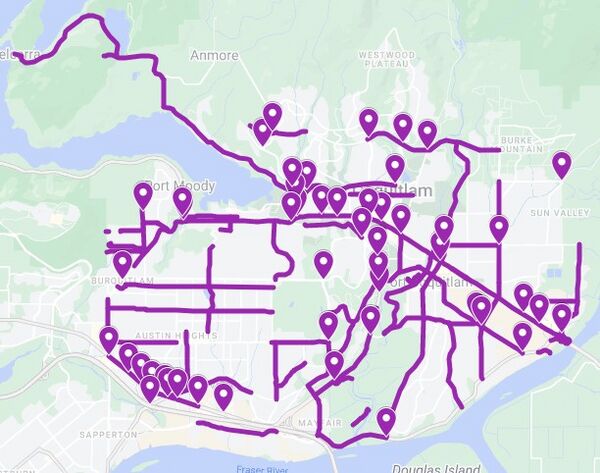Difference between revisions of "HUB Tri-Cities Gaps - Full List"
| Line 12: | Line 12: | ||
-Gaps range from lighting upgrades to intersection rebuilds and installation of protected bike lanes and multi-use paths |
-Gaps range from lighting upgrades to intersection rebuilds and installation of protected bike lanes and multi-use paths |
||
| − | [[File: |
+ | [[File: TCGap_Feb23.jpg| border | center | 600px | link=https://www.google.com/maps/d/u/1/viewer?hl=en&mid=1wlQVVmwJBDBVMZt2S5-5Ts5z9unilKHJ&ll=49.27295615404833%2C-122.79334425211185&z=12]] |
Revision as of 13:46, 25 February 2023
Return to Tri-Cities Committee Wiki
Our gap map for the entire subregion. The map is clickable and leads to an interactive map (please note, you may need to turn off the green, orange, and yellow layers, which indicate route comfort levels). Green lines represent AAA infrastructure. Purple points represent bad intersections, and purple lines represent bad segments. Finalized February 15, 2022.
Notes
-List is not exhaustive. HUB Cycling is lobbying for many other policies, bylaws, and changes (such as speed limit reductions) to make biking safer
-List is based off of constraints, such as municipal budgets and topographical challenges that will persist until ebikes become more widely used
-Gaps range from lighting upgrades to intersection rebuilds and installation of protected bike lanes and multi-use paths
